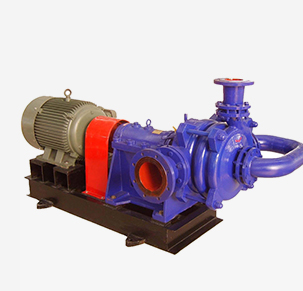Khmer
- Afrikaans
- Albanian
- Amharic
- Arabic
- Armenian
- Azerbaijani
- Basque
- Belarusian
- Bengali
- Bosnian
- Bulgarian
- Catalan
- Cebuano
- Corsican
- Croatian
- Czech
- Danish
- Dutch
- English
- Esperanto
- Estonian
- Finnish
- French
- Frisian
- Galician
- Georgian
- German
- Greek
- Gujarati
- Haitian Creole
- hausa
- hawaiian
- Hebrew
- Hindi
- Miao
- Hungarian
- Icelandic
- igbo
- Indonesian
- irish
- Italian
- Japanese
- Javanese
- Kannada
- kazakh
- Khmer
- Rwandese
- Korean
- Kurdish
- Kyrgyz
- Lao
- Latin
- Latvian
- Lithuanian
- Luxembourgish
- Macedonian
- Malgashi
- Malay
- Malayalam
- Maltese
- Maori
- Marathi
- Mongolian
- Myanmar
- Nepali
- Norwegian
- Norwegian
- Occitan
- Pashto
- Persian
- Polish
- Portuguese
- Punjabi
- Romanian
- Russian
- Samoan
- Scottish Gaelic
- Serbian
- Sesotho
- Shona
- Sindhi
- Sinhala
- Slovak
- Slovenian
- Somali
- Spanish
- Sundanese
- Swahili
- Swedish
- Tagalog
- Tajik
- Tamil
- Tatar
- Telugu
- Thai
- Turkish
- Turkmen
- Ukrainian
- Urdu
- Uighur
- Uzbek
- Vietnamese
- Welsh
- Bantu
- Yiddish
- Yoruba
- Zulu
Telephone: +86 13120555503
Email: frank@cypump.com
ធ្នូ . 11, 2024 01:21 Back to list
Efficient Wastewater Management with Modern Septic Ejector Solutions for Homeowners
The Septic Ejector System A Comprehensive Overview
A septic ejector system is a critical component in managing wastewater for properties not connected to municipal sewage systems. This system is particularly beneficial for homes located in low-lying areas where gravity drainage is not feasible. Understanding how a septic ejector system operates and its components can help homeowners maintain their systems more effectively and ensure proper wastewater management.
At its core, a septic ejector system functions by transporting wastewater from the septic tank to a designated drain field or absorption area
. The system consists of several key components the septic tank, the ejector pump, additional piping, and the drain field.The journey begins in the septic tank, where wastewater flows from the house. Inside the tank, solids settle at the bottom, forming a sludge layer, while the lighter materials, such as grease and oils, float to the top, creating a scum layer. This separation allows for the settling of solids and partial breakdown of organic matter by bacteria. However, once the tank reaches its capacity, it becomes necessary to move the effluent to the next stage. In low-lying properties, gravity alone may not suffice to achieve this transfer, and that is where the ejector pump comes into play.
The ejector pump is a robust device designed to handle wastewater efficiently. When the liquid level in the septic tank rises to a predetermined height, the ejector pump is activated. This pump uses a powerful motor to propel the effluent upward through a discharge pipe towards the drain field. The ejector system is typically equipped with a float switch that automatically engages the pump, ensuring that the system operates only when needed.
septic ejector system

As the wastewater travels through the piping, it eventually reaches the drain field. Here, the effluent is distributed through a series of perforated pipes laid in gravel-filled trenches. The gravel acts as a natural filtration system, allowing the wastewater to percolate into the surrounding soil, where bacteria further break down any remaining contaminants. This process is essential for protecting groundwater and maintaining environmental health.
Regular maintenance is crucial to the longevity of septic ejector systems. Homeowners should be proactive in monitoring the system, checking the pump periodically, and ensuring that it functions correctly. It is advisable to have the septic tank pumped every three to five years to prevent sludge buildup, which could lead to system failure. Additionally, periodic inspections by a licensed professional can help identify potential issues before they escalate into costly repairs.
Understanding the workings of a septic ejector system can empower homeowners to appreciate its role in wastewater management. With proper care and maintenance, these systems can function efficiently for many years, providing an effective solution for properties that are not connected to municipal sewer lines. Furthermore, responsible management helps protect local water sources from contamination, contributing to a healthier environment.
In summary, a septic ejector system is an integral part of wastewater management for homes situated in low-lying areas. With its reliable components and efficient operation, it ensures that wastewater is effectively transported and treated. Through vigilant maintenance and care, homeowners can maximize the lifespan of their septic ejector systems while safeguarding both their property and the environment.
-
High-Performance Air Pumps for Sand & Gravel | Efficient Transport
NewsAug.03,2025
-
ISG Series Vertical Pipeline Pump - Chi Yuan Pumps Co., LTD.|Energy Efficiency, Corrosion Resistance
NewsAug.03,2025
-
ISG Series Pipeline Pump - Chi Yuan Pumps | Energy Efficiency&Compact Design
NewsAug.03,2025
-
ISG Series Vertical Pipeline Pump - Chi Yuan Pumps Co., LTD.|High Efficiency, Low Noise, Durable
NewsAug.02,2025
-
ISG Series Vertical Pipeline Pump - Chi Yuan Pumps | High Efficiency, Low Noise
NewsAug.02,2025
-
ISG Series Vertical Pipeline Pump- Chi Yuan Pumps Co., LTD.|High Efficiency&Compact Design
NewsAug.02,2025










